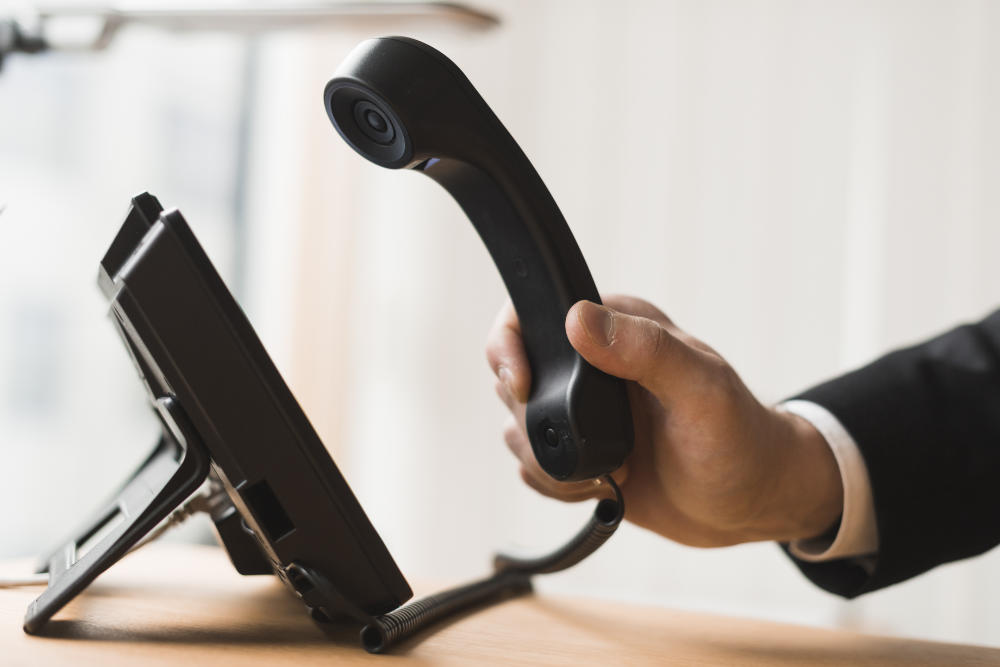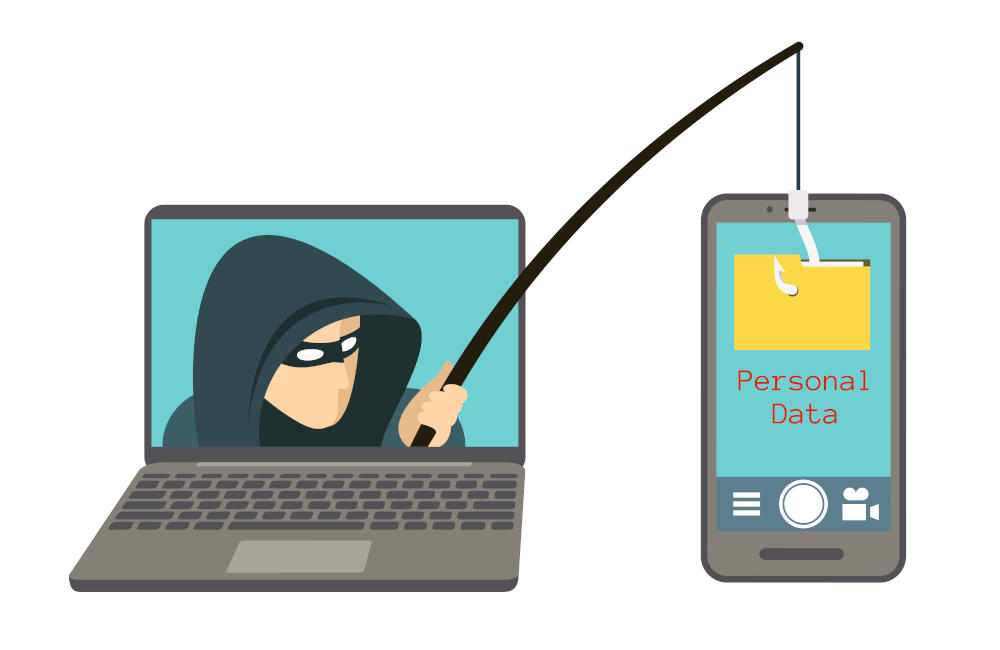
Estimated reading time: 7 minutes
Vishing is a particular type of phishing that uses VoIP (Voice over IP) technology to carry out attacks. Unlike traditional landline telephone services, with VoIP technology it is possible to carry out telephone conversations using the Internet connection.
Hackers often use VoIP in their vishing attacks because this allows them to spoof their caller ID with great ease. Posing as an employee of a legitimate entity, such as a bank, the police or a well-known company, Hackers try to obtain personal and financial information of their victims.
With the information obtained it is possible to access a bank account and empty it. Furthermore, it is possible to commit fraud, scams and other crimes using the identity of the victim. Identity theft is a crime that has been on the rise in recent years, which is another reason to inform yourself and stay alert.
Vishing: how to recognize the attack
Vishing attacks usually use automatic text-to-speech systems to redirect the victim to a telephone number controlled by the hacker, but this does not exclude the possibility that a hacker could engage in a real conversation with his victim. The information most commonly targeted by vishing attacks is bank account data. However, many times, hackers also try to obtain access credentials to well-known services such as Microsoft, Apple or Google.
Using social engineering, hackers carrying out vishing attacks trick their victims into extorting money. Generally, scammers attempt to create a sense of urgency or try to alter the emotional state of their victims. This is to force you to pay quickly and without thinking deeply about what is happening.

Vishing: common attack patterns
Vishing attacks can be different from each other, although they always have common goals. A scammer who uses this type of attack could disguise his Caller ID by pretending to be an authoritative person or any known person. They may also leave pre-recorded messages containing threats in their victims’ email inboxes. Not just emails, hackers could also exploit SMS to carry out their scams, as in cases of smishing.
Scammers usually approach their victims by posing as people of authority or exploit the victim’s personal relationships. Below you will find a list of the most commonly adopted scam schemes.
Most common Vishing attacks
Debt collection agency scam
The scammer pretends to be an official of a debt collection agency. The scammer threatens legal consequences or even arrest if the victim does not pay his debts, even if the victim actually has no debt.
Romance scams
the hacker pretends to be a love interest for his victim who he meets on a dating app or site. He or she may sometimes pose as an old flame from the past who urgently needs money for some family or medical reason.
Tech support scam
The scammer poses as a tech support employee and claims there is a serious technical problem on the victim’s computer. The scammer, in this case, uses fear and a sense of urgency to gain remote control of the victim’s computer. It will then install malware passing it off as diagnostic software. Once you gain remote control of your computer, you can access files or any personal information stored on your computer.
There are real companies that live with this type of “business” in Asian countries. Furthermore, there are known creators and white-hat hackers on YouTube who intercept these scammers and try to carry out reverse (social) engineering to trap these criminals. Some of these creators have achieved remarkable results, causing some of these scammer companies to shut down.

Business and investment scams
Scammers pose as financial experts and convince victims to pay sums of money for investments. Scams centered on cryptocurrencies have been spreading a lot lately, driven by the utopia of making a lot of money in a short time.
Charity scams
Scammers pose as members of charities to convince victims to donate to their cause. These fake organizations don’t actually do any charitable work and the money donated goes directly to the scammers. It is very common for them to use photos of children or people suffering from illnesses to appeal to the human sense of compassion.
Insurance scams
Using the information they have on the cars registered to their victims, they try to offer them advantageous insurance offers. With this strategy it is possible not only to collect other personal information on one’s victims, but also to defraud them financially if the victim decides to purchase the policy proposed by the hacker.
How is it possible to defend yourself from vishing
It is often difficult for victims to recognize vishing attempts because it is not unusual for banks and other entities and organizations to request sensitive information by telephone. Vishing attacks are increasingly sophisticated and can include pre-recorded messages and other ways to increase credibility.
We at SOD suggest several ways to detect vishing attempts, below are some strategies to adopt to recognize this type of attack. The best defense against these frauds, as in the case of phishing, is to know how to identify them immediately and not to spread any personal information by telephone, especially if the request is unexpected.
You should always be careful when using poorly traceable forms of payment such as cash, gift cards and prepaid cards. Additionally, you should pay particular attention to the characteristics of the phone call, such as the tone or accent of the person making the call or the urgency of the call. These can be alarm bells that signal the possible presence of a case of vishing.
To avoid falling victim to vishing, it is advisable to never answer calls from unknown numbers. Another useful tip is to never comply with requests from a suspicious person, such as pressing buttons when asked or answering suspicious questions.
If you are not sure about a number from which calls are received, you can always do an internet search and see if the number belongs to a service we use that is perhaps contacting us with a real problem.
In many countries, social media is used to communicate with the public. Many platforms use protection systems to verify the actual authenticity of government and banking profiles, therefore you should never trust an entity without these badges.

Conclusions
The types and mechanisms of intrusion are increasingly sophisticated. Phishing, smishing and vishing attempts are now a constant in our lives, continually putting our personal data at risk. As we have seen in many situations, data is the most valuable commodity on the internet, so protecting it must be a priority!
To concretely defend ourselves, the use of professional tools is the only safe path to take. Our SOCaaS service protects against vishing but is also a complete tool that guarantees corporate security, identifying and blocking all kinds of threats.
Additionally, SOD also organizes ethical attack campaigns to test the resilience of a company’s employees. After the attacks, the data collected is used to organize training sessions geared towards the specific characteristics of the company and the resilience shown by employees.
For information on the ethical phishing services we offer or to better understand how SOCaaS could be an ideal solution for your company, do not hesitate to contact us by pressing the button below.
Useful links:

Estimated reading time: 5 minutes
Il cybercrimine, sta mirando sempre più ai dispositivi mobili ed è sempre in continua evoluzione. Sui social network e tramite i nostri contatti personali riceviamo sempre più spesso tentativi di truffe mascherati da semplici inviti. Dai rapporti e dai comunicati della polizia postale possiamo notare come negli ultimi anni stiano aumentando i casi di Smishing, che ogni anno causano consistenti danni economici ad aziende e privati per centinaia di migliaia di euro.

Cos’è lo Smishing
Con il termine “Phishing”, ci riferiamo a tutte quelle attività fraudolente messe in atto dagli hackers con il fine di trarre in inganno un individuo. Altri fini possono essere sottrarre informazioni sensibili e utilizzarle per commettere illeciti di natura fiscale.
Lo Smishing si differenzia dal Phishing per via dell’utilizzo degli SMS come strumento di contatto. Il nome viene proprio dalla crasi di SMS e phishing.
Questa tipologia di attacco solitamente avviene sfruttando l’ingenuità del malcapitato, inducendolo a scaricare dei malware autoinstallanti o invitandolo a compilare dei moduli con le proprie informazioni personali. Questi malware si mascherano da comuni applicazioni, in modo da non insospettire la vittima. Nel caso in cui l’utente rilasci delle informazioni all’interno di queste applicazioni, i dati inseriti verranno automaticamente inviati all’hacker, che potrà usarli a suo piacimento.
Analogie con il phishing
Altre tipologie di Smishing, invece, prevedono l’invio di messaggi di testo apparentemente provenienti dalla nostra banca, da un’organizzazione di credito, da un’azienda o da un individuo che conosciamo, nel quale riponiamo fiducia. Di solito questi messaggi contengono segnalazioni riguardanti presunti movimenti sospetti o problemi per l’accesso ai servizi bancari. Sfruttando la fiducia che un individuo pone nei confronti di una banca, l’hacker conduce la sua vittima verso un sito web fasullo.
Infatti, il testo del messaggio, oltre a contenere un messaggio allarmante per la vittima, contiene anche almeno un link che reindirizza il malcapitato verso un sito fraudolento.
Questo tipo di siti lo abbiamo visti anche negli attacchi di phishing, e sono creati appositamente dall’hacker con la speranza che la richiesta di dati sensibili sia compilata. Questa può essere sotto forma di un form di login della banca, del tutto simile a quello originale.
Dei dati raccolti, poi, possono essere fatte varie cose. Potrebbero essere rivenduti, usati per ricattare la vittima o per rubarne altri account che utilizzano la stessa combinazione di user e password. Quest’ultima eventualità è il motivo per cui le password dovrebbero essere uniche e non condivise con vari servizi.
Come difendersi
Per difendersi dagli attacchi di Smishing, non è necessario adottare sofisticate tecniche di difesa.
Essendo dei tentativi di raggiro, potrebbero essere facilmente evitati ignorando il contenuto dei messaggi fraudolenti. Di fatto questa tipologia di attacco, per poter funzionare, necessita dell’interazione da parte dalla vittima. Senza un’interazione da parte dell’utente, è impossibile attuare questa tipologia di attacco informatico.

Individuare tentativi di Smishing.
Ecco alcune tipologie di messaggi o situazioni sospette a cui fare attenzione e di cui valutare bene la provenienza:
– Avvisi urgenti sulla sicurezza, messaggi che promettono denaro o premi gratuiti, offerte o regali. Questi sono tutti dei campanelli d’allarme. Molto probabilmente si tratta di un tentativo di raggiro. Fare leva su un senso di urgenza è tipico di questi attacchi. Una tecnica simile viene usata nel marketing per fare fretta al cliente e spingerlo ad acquistare.
– Gli istituti finanziari o i commercianti non utilizzano mai gli SMS per chiedere ai loro clienti di aggiornare le informazioni relative al proprio conto personale. Soprattutto, non chiedono mai informazioni sensibili, come ad esempio i numeri di una carta di credito.
Un SMS che contiene questo genere di richieste, probabilmente è un tentativo di Smishing. In caso di dubbi inoltre, è possibile contattare la propria banca per avere spiegazioni in merito alla richiesta, in modo da accertarsi se si tratta effettivamente di un tentativo di Smishing oppure no.
– Evitare di cliccare sui link presenti in un messaggio se non si è sicuri che l’SMS provenga realmente da una fonte attendibile.
– Prestare particolarmente attenzione ai numeri telefonici che sembrano sospetti. Questi numeri spesso sono collegati a degli strumenti che hanno la funzionalità di inviare SMS direttamente da una casella e-mail. I truffatori utilizzano questo sistema per evitare di fornire il loro numero di telefono.
– Mai conservare credenziali d’accesso, dati bancari, o informazioni personali sensibili sullo smartphone. Se si utilizza quest’accortezza, sarà impossibile per un hacker ottenere questi dati, anche se dovesse utilizzare un malware.
Mai salvare nulla su un dispositivo, è sempre opportuno avvalersi di sistemi di archiviazione tradizionali, come carta e penna o la nostra cara e vecchia memoria. Alternativamente, affidarsi a un servizio di gestione delle password come Bitwarden.
– Mantenere sempre la calma, anche se il testo del messaggio dovesse contenere minacce o scadenze. Mai abboccare all’amo.
– Denunciare i tentativi di attacco di smishing alla Polizia Postale. Segnalando queste truffe è possibile evitare che altre persone possano cadere nello stesso raggiro.

Conclusioni
Come abbiamo visto in questo articolo, i tentativi di truffa sono in continua crescita. Fortunatamente però, a nostro supporto ci sono istituzioni che indagano costantemente, bloccando i responsabili di queste truffe. Ricordiamo sempre di fare sempre attenzione ogni qualvolta che si forniscono delle informazioni personali. Bisogna sempre verificare che la fonte alla quale stiamo affidando i nostri dati sia attendibile.
Quando si tratta di un’azienda, tuttavia, consigliamo di prendere in considerazione un servizio per fornire gli strumenti adeguati ai dipendenti per contrastare lo smishing o il phishing. I nostro servizio di phishing etico può aiutare a individuare quali siano le vulnerabilità aziendali. Inoltre, organizziamo dei training ad hoc sulle basi dei risultati dei test per aiutare i dipendenti a saper riconoscere i tentativi di phishing e smishing.
Per saperne di più su come il nostro servizio di phishing etico potrebbe aiutare la tua azienda, non esitare a contattarci, saremo lieti di rispondere ad ogni domanda.
Useful links:
Link utili:
Customers
Twitter FEED
Recent activity
-
SecureOnlineDesktop
Estimated reading time: 6 minutes L'impatto crescente delle minacce informatiche, su sistemi operativi privati op… https://t.co/FimxTS4o9G
-
SecureOnlineDesktop
Estimated reading time: 6 minutes The growing impact of cyber threats, on private or corporate operating systems… https://t.co/y6G6RYA9n1
-
SecureOnlineDesktop
Tempo di lettura stimato: 6 minuti Today we are talking about the CTI update of our services. Data security is… https://t.co/YAZkn7iFqa
-
SecureOnlineDesktop
Estimated reading time: 6 minutes Il tema della sicurezza delle informazioni è di grande attualità in questo peri… https://t.co/tfve5Kzr09
-
SecureOnlineDesktop
Estimated reading time: 6 minutes The issue of information security is very topical in this historical period ch… https://t.co/TP8gvdRcrF
Newsletter
{subscription_form_1}© 2023 Secure Online Desktop s.r.l. All Rights Reserved. Registered Office: via dell'Annunciata 27 – 20121 Milan (MI), Operational Office: via statuto 3 - 42121 Reggio Emilia (RE) – PEC [email protected] Tax code and VAT number 07485920966 – R.E.A. MI-1962358 Privacy Policy - ISO Certifications












